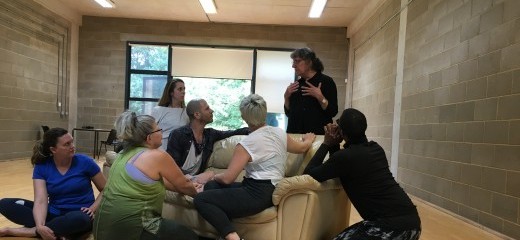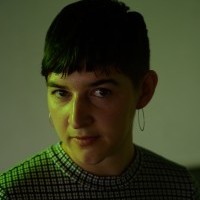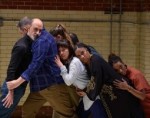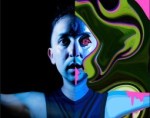
Mary Overlie: Original Anarchist
by Miryam Coppersmith
“One who is directly connected with nature and needs no outside rules as guides in order to function as a positive part of the whole.”
-The original definition of an anarchist, as cited by Mary Overlie in Standing in Space (p. 124)
Mary Overlie’s Six Viewpoints is the system for Original Anarchists. In it, she records the materials of performance: Space, Shape, Time, Emotion, Movement, and Story. These materials exist in their own right, yet it is Overlie’s life-long research that has made this system accessible to performance artists around the world.
In September 2019, Danspace Project (which Overlie co-founded) held a celebration of Mary’s life and work. On June 5th, 2020, Overlie passed away from leptomeningeal cancer in her home state of Montana.
While Overlie was still in hospice care, I interviewed five of the thousands of artists she has influenced: Barney O’Hanlon, Brendan McCall, Deborah Black, and original members of Mary Overlie Dance Company Paul Langland and Wendell Beavers. While these interviews were conducted separately, in the spirit of Overlie’s non-hierarchical practices, the perspectives are woven together here.
Learning from Mary
Brendan McCall: I can still see her, sitting cross-legged with a large cup of coffee… She would observe us all come in, like an anthropologist perhaps, and then she'd begin class with some mind-blowing opening statement like, "There is no space." Something very profound and provocative…
Deborah Black: Mary either didn't talk at all or talked a lot.
BM: Then we'd try to improvise in this world of “no space.” How do you move when there's no space?
Barney O’Hanlon: And she'll let it go on forever and ever, but eventually the artist lands in something and makes the discovery on their own.
My time with her was just constant brain explosions.
DB: What Mary gives to people is a way in, without it having to be esoteric at all. You don't ever need to use an image or anything that doesn't exist for you. You don't have to enter in anywhere that you don't perceive or see or feel or understand.
BOH: And it has huge political ramifications and social ramifications, not just artistic.
Paul Langland: The Six Viewpoints is such a logical and clear system if you look at it from one viewpoint. From another viewpoint, it's a larger philosophical inquiry that asks the creator more rich questions than answers. It demands that the artist utilize their own unique creativity rather than to "plug in" a particular viewpoint to solve a particular problem.
Origins of the Work
Overlie moved to New York City in the early 1970s, performing with the company Natural History of the American Dancer. She created solo works and performed with Wendell Beavers, Paul Langland, and Nina Martin, including creating The Figure (1978) for the first Summergarden Series at MoMA.
Wendell Beavers: People who had no relationship to dance were the ones that really got it… I remember the end of the first performance [of The Figure]. It was 103 degrees, and people were hanging from buildings out on the street overlooking the garden. This whole group of nuns came up to us after. They were so moved and felt like they saw all this iconography... There was a real proof, to me, that the work wasn't referential to art… it was always about those pure things: space, time, form, the human being in space. This invited the onlooker to create their own story.
PL: Mary asked me to be in a new piece, Spatial Contact (1978), performed at the second Contact Quarterly benefit. No touching but ensemble torquing space or running around each other, sliding near each other. It was a spectacular illustration of space, time, and motion, in terms of the Viewpoints.
WB: When she had decided that this was the performance and she's in front of you and she's performing, you felt like your mind was being led wherever she wanted it to go, but it was all perceptual. “Look here, feel this.” It was almost like a text.
She's speaking about how she experiences the world and she's translating it into this medium of movement, space, and time. That's why she had to define it because she wasn't quoting steps so that you know it’s dance. She wasn't going to move a certain way. It was extremely radical.
The Horizontal / The Anarchy
The horizontal laboratory allows a performer to create non-hierarchical compositions where no one material is inherently more important than another. (Standing in Space, p. 79)
BOH: When you find yourself in the horizontal laboratory, as Mary would say, you find that you coexist with everything and everyone and one thing is not more important than the other. You're bringing your full self, just as the chair is bringing its full “chairness” to the room.
BM: With an awareness of and implementation of the Viewpoints, you don't need a script to make a play, you don't need a choreographer to make a dance, you don't even need a venue to present the work. It’s revolutionary.
DB: Mary really does live the idea of the deconstructed hierarchy. She doesn't see herself as being above any of her students.
WB: Mary is in hospice care right now. She calls me when she feels like she can talk. She'll make re-statements of the basic idea of what the Viewpoints are about. Those are the a-ha moments. It's not something new; it's like oh, yes! it's all contained in this pithy core, what we've always done. But it's very exciting!
Miryam Coppersmith: The anarchy might just be in the things being what they are and discovering and re-discovering them.
WB: The anarchistic part is one disrupting one's own mind or pre-conceptions. Let nature speak to you; let the elements speak to you. Mary has a powerful, direct experience with nature from living in Montana. But if you're in a room with four walls, you're not in an organic environment, what nature do you have? Oh, I have space, that's nature. I have time. And I have my perceptions.
Mary’s Legacy
BM: She's like Prometheus; she got fire and I got to hold this fire and I just want to give it to other people. Not just give them fire, but show people how to create their own fire.
WB: We could credit Mary with having this big mind and a lot of courage and a lot of energy to stick to going, “No, we don’t have to make anything up, we really need to deal with things as they are.”
PL: At first, I didn't consciously perceive the potential and impact of Mary's work and her creation of the Six Viewpoints. This was because of her light and gentle touch physically, emotionally, and verbally. But she has profoundly expanded not only the institutions of new dance and theater, but also the methodologies of training… And I think she’s also an inspiration for other artists. Profound inspirations and ideas, they're delicate. And then you make them real, and then the world changes.
Read part two of these interviews, focused on the relevance of the Viewpoints during the COVID-19 crisis and the future of Viewpoints, which will be coming to tD soon.
For more on Mary Overlie and the Viewpoints, see sixviewpoints.com.
Interviews with Brendan McCall, Deborah Black, Barney O’Hanlon, Paul Langland, and Wendell Beavers, conducted via Zoom, April 27-May 14.
By Miryam Coppersmith
June 5, 2020








